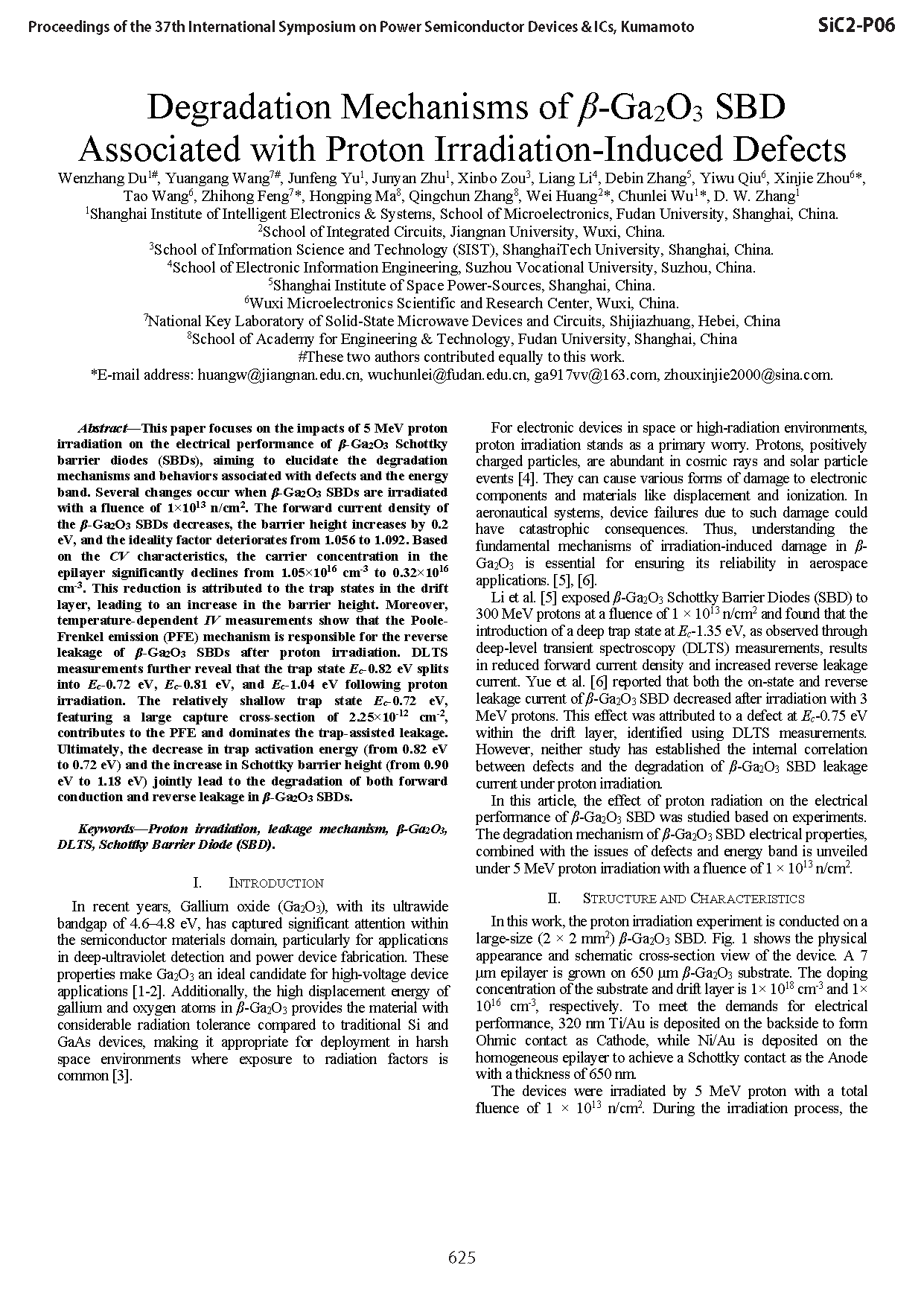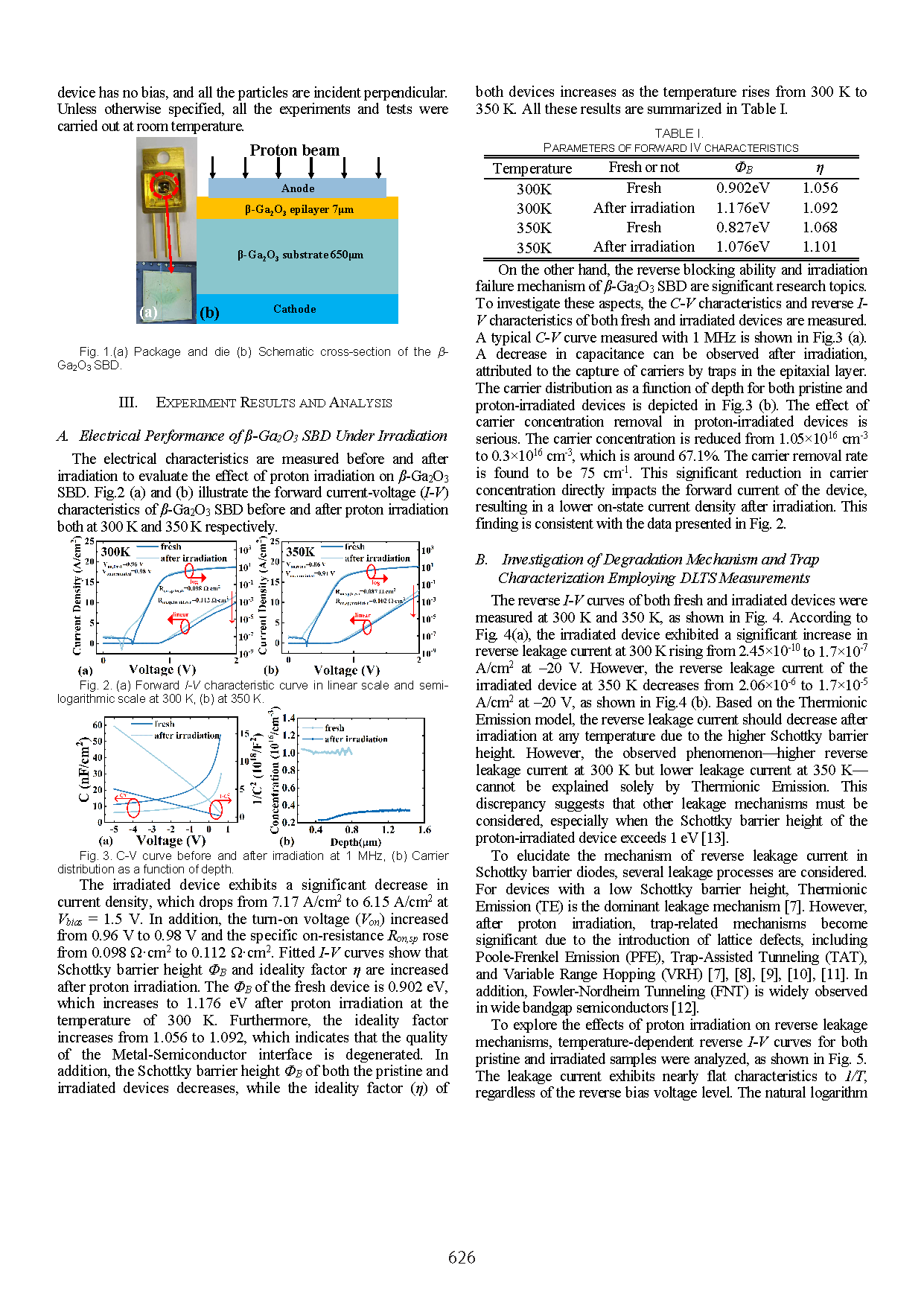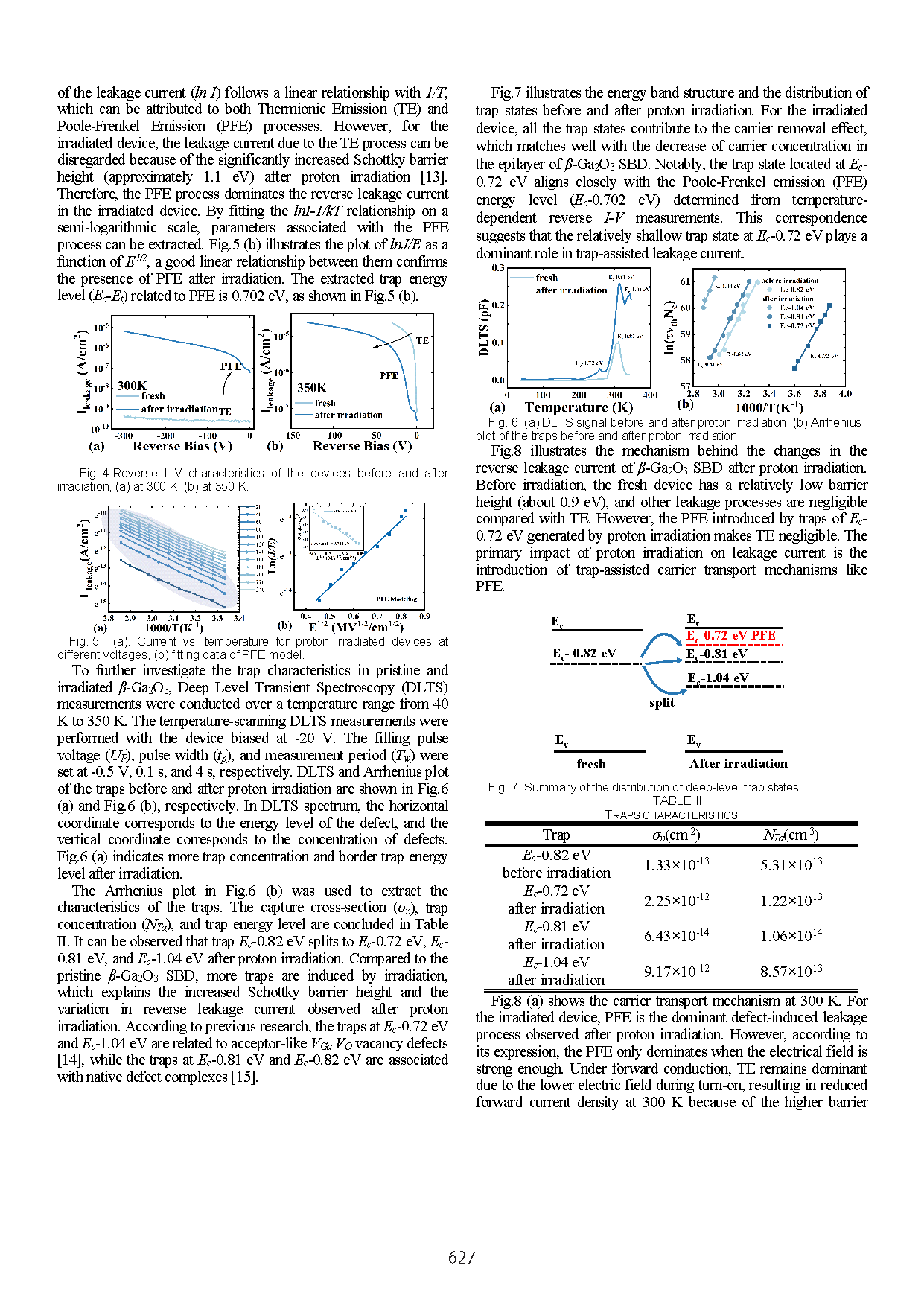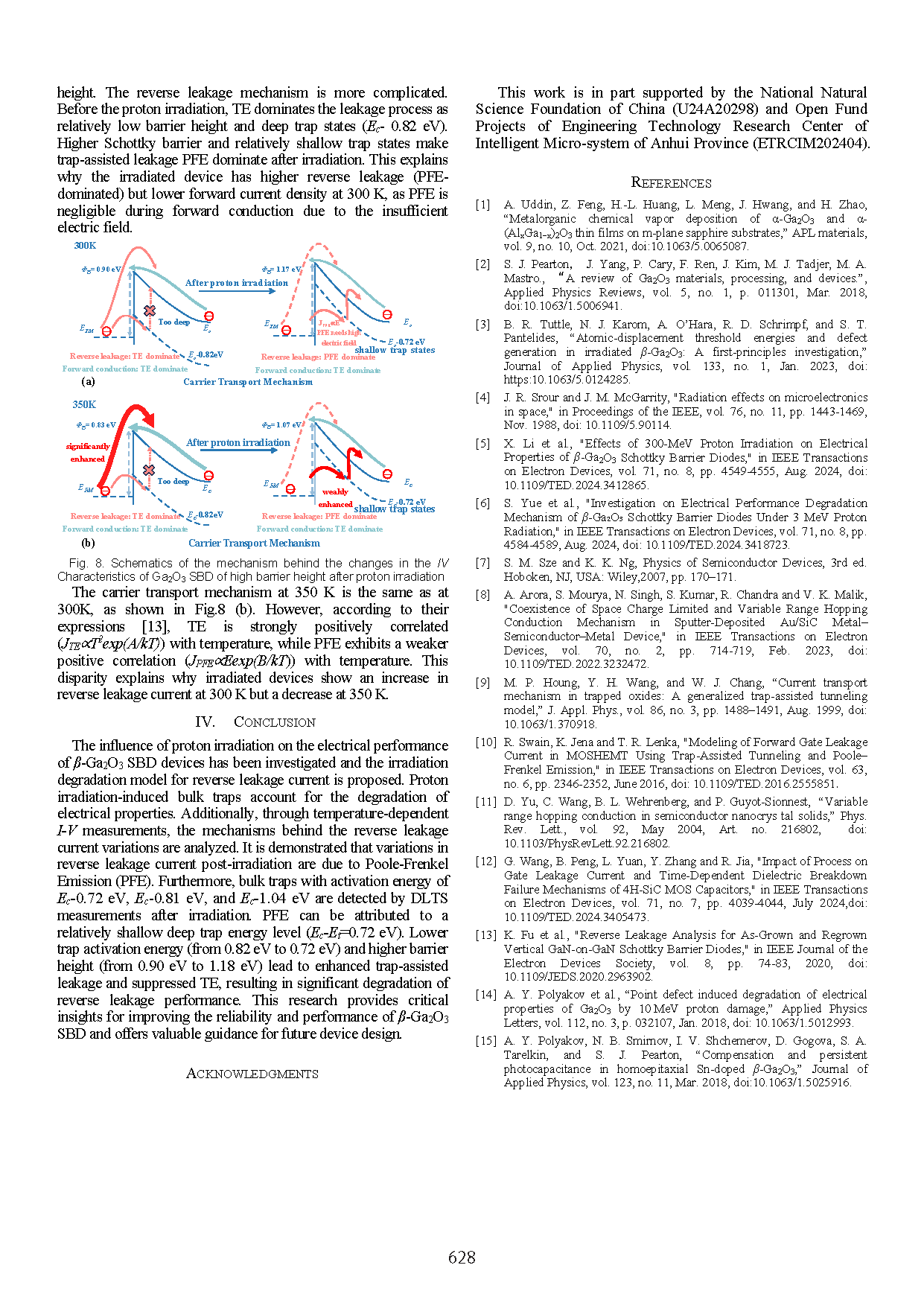
【Member Papers】Degradation Mechanisms of β-Ga₂O₃ SBD Associated with Proton Irradiation-Induced Defects
日期:2025-07-04阅读:293
Researchers from the Fudan University have published a dissertation titled "Degradation Mechanisms of β-Ga2O3 SBD Associated with Proton Irradiation-Induced Defects" in ISPSD 2025.
Project Support
This work is in part supported by the National Natural Science Foundation of China (U24A20298) and Open Fund Projects of Engineering Technology Research Center of Intelligent Micro-system of Anhui Province (ETRCIM202404).
Background
In recent years, Gallium oxide (Ga2O3), with its ultrawide bandgap of 4.6–4.8 eV, has captured significant attention within the semiconductor materials domain, particularly for applications in deep-ultraviolet detection and power device fabrication. These properties make Ga2O3 an ideal candidate for high-voltage device applications. Additionally, the high displacement energy of gallium and oxygen atoms in β-Ga2O3 provides the material with considerable radiation tolerance compared to traditional Si and GaAs devices, making it appropriate for deployment in harsh space environments where exposure to radiation factors is common.
Abstract
This paper focuses on the impacts of 5 MeV proton irradiation on the electrical performance of β-Ga2O3 Schottky barrier diodes (SBDs), aiming to elucidate the degradation mechanisms and behaviors associated with defects and the energy band. Several changes occur when β-Ga2O3 SBDs are irradiated with a fluence of 1×1013 n/cm2. The forward current density of the β-Ga2O3 SBDs decreases, the barrier height increases by 0.2 eV, and the ideality factor deteriorates from 1.056 to 1.092. Based on the CV characteristics, the carrier concentration in the epilayer significantly declines from 1.05×1016 cm-3 to 0.32×1016 cm-3. This reduction is attributed to the trap states in the drift layer, leading to an increase in the barrier height. Moreover, temperature-dependent IV measurements show that the Poole-Frenkel emission (PFE) mechanism is responsible for the reverse leakage of β-Ga2O3 SBDs after proton irradiation. DLTS measurements further reveal that the trap state Ec-0.82 eV splits into Ec-0.72 eV, Ec-0.81 eV, and Ec-1.04 eV following proton irradiation. The relatively shallow trap state Ec-0.72 eV, featuring a large capture cross-section of 2.25×10-12 cm-2, contributes to the PFE and dominates the trap-assisted leakage. Ultimately, the decrease in trap activation energy (from 0.82 eV to 0.72 eV) and the increase in Schottky barrier height (from 0.90 eV to 1.18 eV) jointly lead to the degradation of both forward conduction and reverse leakage in β-Ga2O3 SBDs.
Conclusion
The influence of proton irradiation on the electrical performance of β-Ga2O3 SBD devices has been investigated and the irradiation degradation model for reverse leakage current is proposed. Proton irradiation-induced bulk traps account for the degradation of electrical properties. Additionally, through temperature-dependent I-V measurements, the mechanisms behind the reverse leakage current variations are analyzed. It is demonstrated that variations in reverse leakage current post-irradiation are due to Poole-Frenkel Emission (PFE). Furthermore, bulk traps with activation energy of Ec-0.72 eV, Ec-0.81 eV, and Ec-1.04 eV are detected by DLTS measurements after irradiation. PFE can be attributed to a relatively shallow deep trap energy level (Ec-Et=0.72 eV). Lower trap activation energy (from 0.82 eV to 0.72 eV) and higher barrier height (from 0.90 eV to 1.18 eV) lead to enhanced trap-assisted leakage and suppressed TE, resulting in significant degradation of reverse leakage performance. This research provides critical insights for improving the reliability and performance of β-Ga2O3 SBD and offers valuable guidance for future device design.
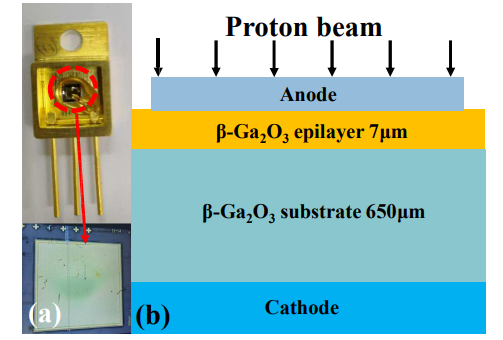
Fig. 1. (a) Package and die (b) Schematic cross-section of the β-Ga2O3 SBD.
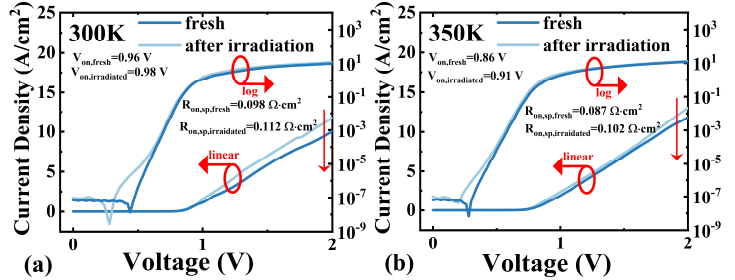
Fig. 2. (a) Forward I-V characteristic curve in linear scale and semilogarithmic scale at 300 K, (b) at 350 K.
